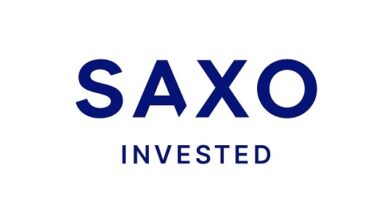EPS and Stock Price Correlations: What Traders Should Know

When it comes to trading, understanding the factors that influence stock prices is crucial. One of the most widely analyzed metrics for gauging a company’s financial health is Earnings Per Share (EPS). But how does EPS relate to stock price? In this article, we’ll dive deep into the correlation between EPS and stock prices, exploring the significance, impact, and practical applications of this relationship. By the end, traders will be equipped with the knowledge to better analyze earnings reports and make informed trading decisions.
Understanding EPS: Key Concepts and Importance
Earnings Per Share (EPS) is a financial metric that shows a company’s profitability by measuring the portion of a company’s profit allocated to each outstanding share of common stock. It is calculated by dividing a company’s net income minus any dividends on preferred shares by the weighted average number of outstanding shares.
There are two primary forms of EPS that traders need to be aware of: Basic EPS and Diluted EPS.
- Basic EPS: This is calculated using the actual number of shares currently outstanding. It’s a straightforward measure of profitability.
- Diluted EPS: This includes potential shares that could be created from convertible securities, stock options, or other sources. It’s a more conservative measure as it accounts for the possibility of future dilution.
Understanding the difference between these two is essential, as a company with significant stock options or convertible securities may see a notable difference in its diluted EPS compared to its basic EPS.
The Role of EPS in Stock Evaluation
For traders, EPS is more than just a number—it’s an indicator of a company’s ability to generate profits for its shareholders. Companies that report strong EPS numbers often signal solid financial health, which can influence investor sentiment and, in turn, stock price. Positive earnings growth generally reflects effective management, a strong business model, and future potential, making the stock more attractive to investors.
EPS can also give traders insight into the market’s expectations and the company’s growth trajectory. For instance, if a company consistently beats its EPS estimates, it might signal a period of sustained growth, potentially resulting in a rising stock price.
The Correlation Between EPS and Stock Price
At a basic level, traders often expect that an increase in EPS will lead to a rise in stock price, while a decrease in EPS may cause the stock price to drop. This expectation is grounded in the assumption that a more profitable company can reinvest in growth, distribute dividends, or pay down debt, all of which are seen as positive for stockholders.
However, this correlation is not always straightforward. Several factors influence whether EPS growth will result in a corresponding increase in stock price. These factors include investor sentiment, overall market conditions, and the company’s long-term growth prospects.
Lag Time Between EPS Release and Stock Price Movement
After an earnings report is released, stock prices may not always react immediately. Often, there’s a delay in market response as traders and analysts digest the information and factor in the broader economic context. Stock prices may continue to move in anticipation of the next earnings report or in response to new news, making it important for traders to look at the long-term trend of EPS growth rather than focusing solely on a single quarter’s results.
Additionally, the stock price’s reaction to EPS can be impacted by expectations leading up to the earnings release. If a company’s earnings report is already priced into the stock, even a strong report might not trigger a price jump.
EPS Growth vs. Stock Price Growth
Sustained EPS growth often correlates with stock price appreciation, but the relationship is not always linear. While EPS growth may indicate increased profitability and future potential, external factors such as changes in interest rates, market competition, or economic downturns can affect stock price growth.
For example, a company might show consistent EPS growth, but if the industry it operates in is facing headwinds, the stock price may stagnate or decline. In contrast, a company in a growing industry with stable earnings might see its stock price rise rapidly.
Factors Influencing the EPS-Stock Price Relationship
Market sentiment plays a key role in how EPS affects stock prices. Even a modest EPS increase may cause a price surge if expectations are strong, but if expectations are too high, a positive earnings report may not meet the mark and lead to a price drop. Broader sentiment also matters; a great EPS report may not boost stock prices if there’s a market-wide downturn or shift in investor preferences.
Macroeconomic factors like inflation, interest rates, and economic growth can affect the correlation between EPS and stock prices. For example, rising interest rates may squeeze profit margins despite strong EPS, while inflation can erode purchasing power, affecting stock performance. During economic uncertainty, the connection between EPS and stock price may weaken, as strong earnings might not prevent price declines.
Conclusion
Understanding the relationship between EPS and stock prices is essential for traders seeking to navigate earnings seasons and assess a company’s potential for growth. While there is a general correlation between EPS and stock price, other factors—such as market sentiment, macroeconomic conditions, and company-specific elements—can influence how stock prices react to EPS reports.
By combining EPS analysis with other indicators and using effective risk management strategies, traders can make more informed decisions and better capitalize on the opportunities presented by earnings reports. If you found this article informative, check out another great post to read about refining your trading strategies and gaining a deeper understanding of key financial metrics.




